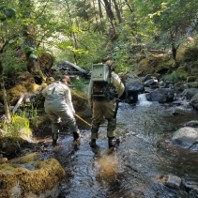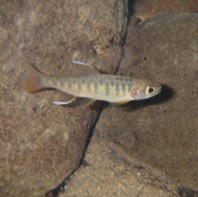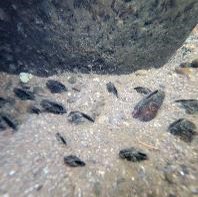JUVENILE SALMON SURVEYS
Welcome to our webpage dedicated to monitoring juvenile salmonids. AQI uses snorkel surveys to examine trends in the distribution and abundance of coho salmon (Oncorhyncus kisutch) and steelhead (O. mykiss) during the summer rearing (parr) phase. The focus of this project is to support viability analyses for coho salmon in Western Oregon, as mandated by the federal Endangered Species Act.
Data collected play crucial roles in conservation and recovery planning for coho salmon, steelhead, and cutthroat trout (O. clarkii clarkia) and inform restoration efforts. AQI snorkel survey data are used to detect changes in fish communities and investigate relationships between freshwater habitat characteristics, adult spawner abundance, and juvenile recruitment. Additionally, these surveys provide insights into the distribution of freshwater mussels. Snorkel surveys are conducted within three coho Evolutionarily Significant Units (ESUs) and four steelhead Distinct Population Segments (DPSs) in Western Oregon.
Snorkel surveys typically overlap with habitat surveys, allowing relationships between fish occurrence and abundance and habitat variables to be examined. Integration of habitat and snorkel surveys allows us to effectively monitor changes in abundance, identify challenges, and make informed decisions to support healthy juvenile salmonid populations.
Data summaries, juvenile salmonid trend information, and snorkeling protocols can be found in our annual reports on the publications tab on this website.
Project Contacts:
Ron Constable
Matt Strickland

Electrofishing
AQI uses electrofishing in limited ways for specific purposes: to evaluate the upper distribution of anadromous fish within our sampling frame, to calibrate snorkel surveys and evaluate snorkel survey protocols, and, previous to 2018, to determine fish presence in stream reaches that were not conducive to snorkeling.

Juvenile Snorkel Surveys
Juvenile coho salmon (O. kitsutch) and steelhead trout (O. mykiss) distribution and abundance trends are products of AQI's juvenile salmon surveys. AQI also monitors cutthroat trout (O. clarkii clarkia) and freshwater mussels. Data are used for Endangered Species Act viability evaluations, ODFW’s Conservation and Recovery planning by restoration practitioners, and to investigate relationships between habitat variables, parental spawner abundance, and juvenile occupancy and recruitment. This monitoring has been ongoing since 1998.

Freshwater Mussels
Freshwater mussels are declining across the West, and most Western states do not actively manage these animals. AQI has cooperated with the Xerces Society to monitor mussels since 2010. This partnership has resulted in verifying mussels in dozens of watersheds where their status was unknown and analyses of mussel occurrence patterns and connections between mussel occurrence and habitat variables.




